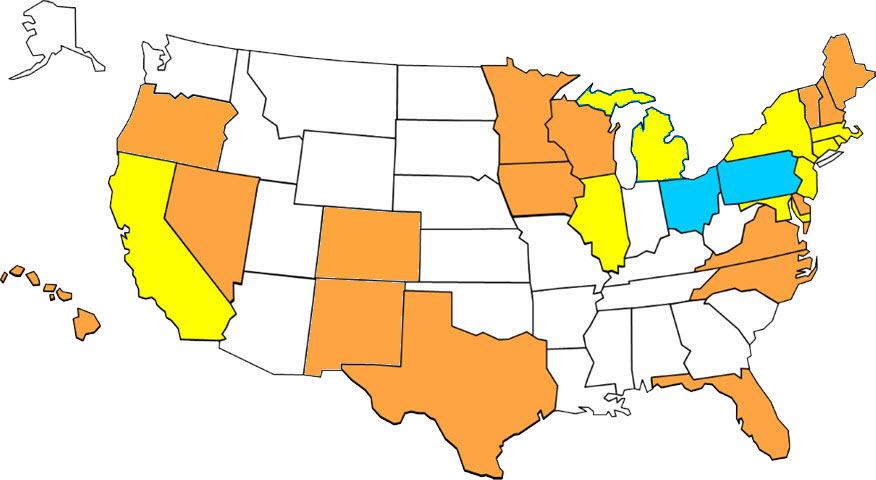Overview
The presence of unlocked guns in homes increases the risk of both unintentional gun injuries and intentional shootings. Safe storage laws require guns to be stored locked and unloaded when any person prohibited from possessing a gun is present in the gun owner’s home, including convicted felons, those convicted of domestic violence, and those with certain mental health conditions. Child Access Prevention (CAP) laws impose criminal liability on adults who negligently leave firearms accessible to children or otherwise allow children access to firearms.
Because unintentional injuries continue to be the leading cause of death in children older than 1 year, pediatricians play a key role in injury prevention by providing anticipatory guidance to parents to help minimize the risk of injury in the child’s everyday environment. The presence of firearms in the home poses an increased risk to a child, and asking a parent a question about gun ownership can open up an opportunity to educate parents about potential dangers to which their child is exposed. “Anticipatory guidance” is a major component of pediatric care and helps patients and their families know what to watch for in the future. Such guidance covers multiple topics including child passenger safety seat use, drowning prevention, parental tobacco use, and developmental milestones.
AAP Position
- The American Academy of Pediatrics (AAP) is committed to protecting children from firearm-related injury and violence. The absence of guns in homes and communities is the most reliable and effective measure to prevent firearm-related injuries in children and adolescents.
- The AAP supports a number of measures to reduce the destructive effects of guns in the lives of children and adolescents, including safe storage and CAP laws.
- To prevent gun-related death and injuries, the AAP recommends that pediatricians provide firearm safety counseling to patients and their families.
Facts
- About 1/3rd of American children live in homes with firearms, and of these households, 43% contain at least 1 unlocked firearm. Thirteen percent (13%) of households with guns contain at least 1 firearm that is unlocked and loaded or stored with ammunition.
- Laws reducing child access to firearms, which primarily require safe gun storage, are associated with lower overall adolescent suicide rates. The presence of a firearm at home increases the risk of suicide even among those without a previous psychiatric diagnosis.
- Suicide attempts involving a firearm more often are fatal (91%) compared with those involving drug overdoses (23%). The increased risk of suicide is particularly striking for younger persons where guns are stored loaded and/or unlocked.
- Like counseling on seat belt use or pool safety, counseling parents on firearm ownership and safe storage practices is important and helps mitigate the risk of death and injury to children.
- In controlled studies, individuals who received physician counseling were more likely to report the adoption of 1 or more safe gun-storage practices.
Progress
- 16 states and DC – laws requiring guns stored locked.
- 2 states – laws requiring that trigger locks accompany gun purchases.
- 9 states – laws requiring that guns be stored locked and that trigger locks accompany gun purchases.

For information on current law or pending legislation in your state, please contact AAP State Advocacy at stgov@aap.org.
More
Last Updated
01/26/2024
Source
American Academy of Pediatrics